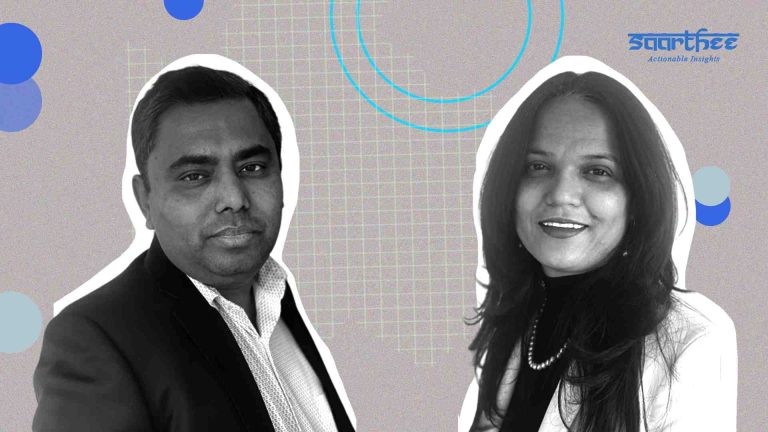Sudip Mitra has had an interesting journey with data science. Confessing that he has learnt everything “on the job”, he has been successfully driving analytics initiatives for leading firms in the last 16 years, working with companies like Marico, Philip Morris International, Aditya Birla Group and others. “Having either serviced or been in consumer-facing industries like telecom and FMCG, I learnt it on the job, like many others,” he said.
Through his data science journey, he has mastered areas such as market research, consumer and shopper insights and media analytics, driving strong consumer-led strategic thinking in his work. Mitra is a firm believer that for businesses to be successful, it has to be backed by the voice of the consumer.
To have a deeper insight into this analytics career and how has he seen the analytics industry evolve in the last few years, we got in touch with Mitra to get his exclusive insights.
The Analytics Journey
Mitra is currently the SVP, Consumer Insights and Brand Development at Aditya Birla Group. With a keen interest in data monetization, consumer strategy, media modelling, he has been instrumental in dovetailing and supporting medium to long term strategic planning for the group as well as supporting capability practices. But he wasn’t always an analytics guy!
He graduated from basic excel macros to complex front-end and back-end systems, of which, most of his analytics exposure has been from the standard CPG and retail analytics practice such as media optimization, marketing mix, supply chain to sales prediction, retail churn analysis, in-store modelling, category growth drivers etc. He admits that it is only recently that he has been able to get into work around neural networks analysis and developing product sensory networks among others.

“Having traversed through various technological developments, I don’t think that the fundamental business questions have changed. It revolves around three primary tasks — penetration, consumption and premiumization. However, with the advent of analytics, we have been able to address it in a better way. This is one huge shift that I have witnessed since the time I joined the industry.” he adds.
The Changing Scenario Of Analytics Adoption Across Industries
There is no denying that Mitra has a diverse experience in various industries and has seen the adoption of analytics vary in different domains and scenarios. On being asked how he sees the adoption of analytics changing across these industries, he is quick to add that India’s cloud computing market is poised for growth and that technology is increasingly being embraced across businesses as well as consumers. “Companies that have captive data like telecom, real estate, retail, services, hospitality, medicine etc. have a head start. The others such as FMCG etc are catching up too,” he said.
He firmly believes that through better IT capability, better and faster forecasting, companies have been able to successfully navigate data and capture it accurately. He further believes that aiding this ecosystem are the futuristic technologies such as AI, ML, advanced analytics and immersive media. “The challenge is to now to harness it to get great real-time insights or ahead-of-the-curve foresight,” he shares.
“While data science has evolved, especially with e-commerce and start-ups being the catalysts for this, business analytics as a practice is yet to evolve. Its like laws are in plenty but not skilful lawyers,” he adds.
Mitra strongly believes that while it has evolved in terms of hardware, immersive media, IoT and more, but not as evolved as to make things simple and user-friendly for the end practitioners.
He believes that the analytics industry is dazzled with tools, however, the impact of analytics, especially w.r.t. to monetization of the data will still take some time. Some of the reasons he mentions are:
- Data scientists do not often understand the business problem at hand and hence have limited clarity
- End users are also not clear about the tools and they often struggle w.r.t. interpretation
- Hence there is an acute need to the last mile practitioner who can connect the dots back to business.
Sneak Peek Into His Current Role
Aditya Birla Group is one of the pioneers of NPS (Net Promoter Score) practice and have integrated bottom-up transaction NPS as well as top-down and benchmarked NPS. This practice is called Mission Happiness. As Mitra shares, what sets this apart from most other competing for NPS is that it operates on a closed-loop system wherein it identifies structural actions and then closes these through cross-functional interventions.
This process is technology-supported (through an extensive portal) that immediately triggers a customer requirement solving it on a real-time basis, leading to immediate customer satisfaction. It also works on integrating the NPS system with another captive data from other touchpoints and episodes eg. store data, market data etc. so as to enable the NPS to be used as a surrogate predictive indicator. It requires data integration and analysis of the highest order.
Analytics And Artificial Intelligence In Consumer Strategy And Generating Customer Insights
Mitra shares that as long as any of the classical 5Ps are concerned, a lot of good work is happening. What earlier would be solved through classical market research is being substituted by sharp insightful algorithm-based trends work, dynamic pricing work, customer segmentation work, retail optimization, supply chain and logistics work, category predictions and more. Captive and non-captive data can be used in real-time to understand the dynamic market and consumer play to create short term intervention and medium-term strategy.
“2014 – 18 were crucial years in the consumer-facing companies as they transited into this journey. It took all stakeholders vertically across the organisations time to get used to the new order, to be able to see and react real-time and collectively look at ‘one data’ and ‘one truth for various silo-fied data streams to talk to each other. Once that journey got over, systems and people settled down in these consumer-facing industries,” he said.
However, having said that, there is a significant scope of improvement in new product development and launches. Once multiple data points start talking to each other, and more importantly, start predicting short to medium term better, is where we will see analytics providing sharper foresight.
Changing Regulations Around AI And analytics Affecting Business Growth
Mitra shares that the foundation of any regulations is data. “Even today, while we capture some moments of truths in a consumer journey, we fail to capture the entire episodic touchpoints,” he says. Longitudinal episodic behavioural data is extremely scarce in India. “Hopefully, as data privacy laws become tighter, this will change and a lot of the public or not so public data streams will talk to each other,” he says.
He also stresses on the fact that while data scientists tend to focus a lot on tools and algorithms and that the data platform that enables these tools is equally important, it is often overlooked. Therefore he feels that predictive data maintenance, real-time fraud prevention and compliance services are some of the areas that need to be brought up to speed.
Wrapping Up With The Biggest Challenges That Indian Industries Face
“The biggest challenge is people capability,” shares Mitra. The needle needs to move from process conversation to impact conversation, and more so, sustainable impact conversation. Speed and scale need to go hand in hand. Also, capability, both at the suppliers and buyer end need to increase. “The key point is if practitioners and end-users cannot think of dynamic data and insights, then they won’t be able to absorb the same,” he adds.
Mitra believes the overall mindset needs to evolve. “Till a few years back, maturity and penetration were negatively correlated implying that as firms grow, their analytics penetration tends to lose on depth and maturity. This might be changing now as firms are getting more mature in deploying their analytics solutions. But it’s still a fairly long way to go,” he said on a concluding note.



















































































